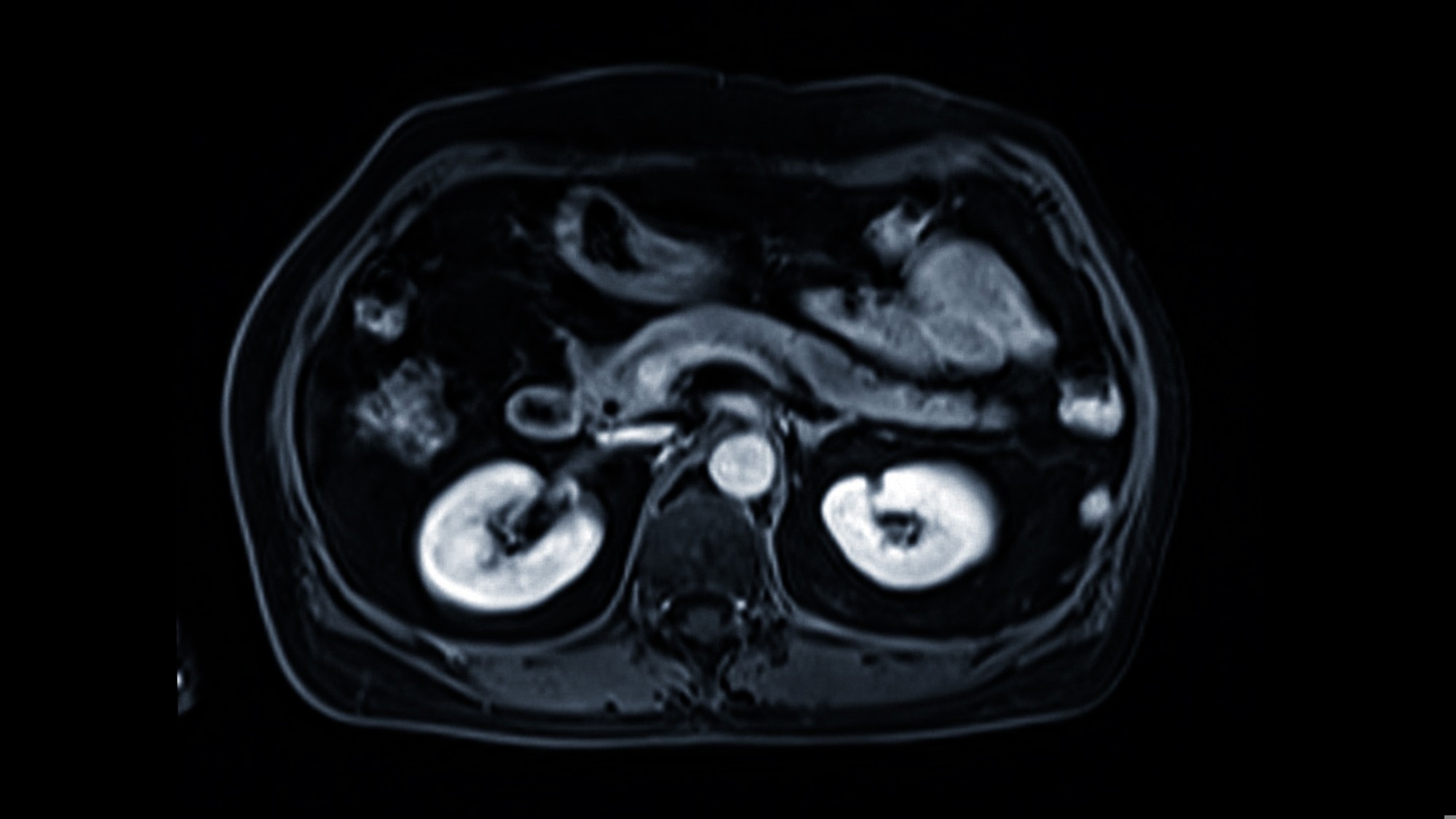A publication in Nano-Micro Letters reveals a significant breakthrough in bladder cancer treatment. Researchers from the University of California, Davis, have developed a multifunctional nanoparticle platform that integrates phototherapy and real-time imaging capabilities.

Image Credits: Radiological imaging/Shutterstock.com
Bladder cancer is a major concern in urology: it has high recurrence rates and current treatments to combat the cancer have little effect. These treatments, which include transurethral resection, chemotherapy, and immunotherapy, frequently fail due to poor drug retention, systemic toxicity, and resistance development.
Photodynamic treatment (PDT) and photothermal therapy (PTT) show potential, but their clinical effectiveness is often restricted due to oxygen dependency, poor selectivity, and poor pharmacokinetics.
Why These Nanoparticles Matter
The pyropheophorbide a-bisaminoquinoline conjugate lipid nanoparticles (PPBC LNPs) developed in the study show several desirable properties in bladder cancer treatment.
The nanoparticles have enhanced phototherapy capabilities: they have strong photodynamic and photothermal effects, which are shown to have efficient induction of bladder cancer cell death. The PPBC LNPs also suppress autophagy, which is often the route cause of treatment resistance. By blocking autophagy from occurring, the efficacy of phototherapy treatment is increased.
Another advantageous property of these nanoparticles is their bimodal imaging capabilities. Their photoacoustic (PA) and fluorescence (FL) imaging characteristics enable high-resolution in imaging and deep tissue penetration. High sensitivity imaging as a result of their PA and FL properties allows biodistribution tracking, so the effective delivery of phototherapy can be monitored.
Nanoparticle Design And Capabilities
Microfluidic technology was used to synthesize PPBC LNPs, which guaranteed scalability and uniform size. The nanoparticles formed had an average size of 107 nm and a narrow polydispersity index (PDI) of 0.15, which displayed high stability, biocompatibility, and potential for long-term storage.
A further insight from the study showed that under light irradiation PPBC LNPs produced a considerable amount of ROS, causing hyperthermia, which is indicative of strong PDT and PTT effects. Cell ablation heat production was found to be effective, showing a high photothermal conversion efficiency of 32.7 %.
Effective PA imaging was made possible by significant optical absorption by the nanoparticles in the near-infrared region. Dual imaging using FL as well as PA was possible due to the PPBC LNPs fluorescent properties, offering additional data on drug accumulation and therapeutic response.
In Vivo Efficacy and Safety
The study found that the PPBC LNPs markedly reduced tumor development in both subcutaneous and orthotopic bladder cancer animal models. Interestingly, several tumors were completely ablated even after only two doses of the nanoparticles and laser treatment.
Dual imaging with PA and FL verified the effective accumulation of PPBC LNPs at the tumor site, and retention was noted for up to six days. The PA and FL imaging also made it possible to track biodistribution in real time, and phototherapy timing was adjusted using this dual imaging technique.
Stable body weights were observed and there was no discernible toxicity in the main organs, indicating the treatment has favorable safety profiles.
Future Outlook
With their multifunctional design and scalable synthesis, PPBC LNPs are well-positioned for further development. Ongoing studies in larger animal models aim to confirm their safety and efficacy and assess their safety in animals more comparable to human use.
Journal Reference:
Tang, M., et al. (2025) Multifunctional and Scalable Nanoparticles for Bimodal Image-Guided Phototherapy in Bladder Cancer Treatment. Nano-Micro Letters. doi.org/10.1007/s40820-025-01717-0.